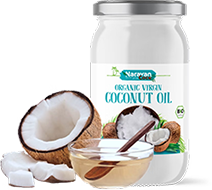Chamomile – Nature’s Calming Healer
Scientific Name: Matricaria chamomilla (German Chamomile), Chamaemelum nobile (Roman Chamomile)
Common Names: Chamomile, German Chamomile, Roman Chamomile, Ground Apple
Family: Asteraceae
Overview
Chamomile is a gentle yet powerful medicinal herb known for its calming and healing properties. Its small daisy-like flowers are not only beautiful but also rich in therapeutic compounds. Used for centuries in traditional medicine, chamomile is most commonly consumed as a tea to relieve stress, aid digestion, and promote restful sleep.
There are two primary types of chamomile:
- German Chamomile (Matricaria chamomilla): An annual used in teas and herbal remedies.
- Roman Chamomile (Chamaemelum nobile): A perennial used in aromatherapy and landscaping.
Botanical Description
- Growth Habit: Herbaceous plant growing 15–60 cm tall
- Leaves: Finely divided, light green, feathery leaves
- Flowers: White-petaled daisy-like flowers with yellow centers
- Scent: Sweet, apple-like aroma
- Lifespan: Annual (German) or perennial (Roman)
Medicinal Properties
Chamomile contains essential oils and flavonoids like apigenin, bisabolol, and chamazulene, which give it anti-inflammatory, calming, and healing effects.
Key Health Benefits:
- Sleep Support: Eases insomnia and promotes relaxation
- Digestive Aid: Relieves indigestion, bloating, and nausea
- Anti-inflammatory: Soothes skin irritation, eczema, and rashes
- Antispasmodic: Helps relieve menstrual cramps and muscle tension
- Immune Support: Fights colds and infections
- Wound Healing: Speeds recovery from minor cuts and burns
☕ Fun Fact: Chamomile tea is one of the world’s most popular herbal infusions—especially as a bedtime drink!
Culinary & Cosmetic Uses
- Tea: Most common form, used to relieve stress and stomach issues
- Skin Care: Found in creams, lotions, and facial toners for soothing sensitive skin
- Hair Care: Used in herbal shampoos for natural shine and lightening
Cultivation & Growing Conditions
Chamomile is easy to grow, making it a great addition to gardens and herbal farms.
Growing Requirements:
- Climate: Thrives in temperate regions with plenty of sunlight
- Soil: Well-drained sandy to loamy soil with pH between 6.0–7.0
- Watering: Light and regular watering; drought-tolerant once established
- Propagation: Grown from seeds; flowers harvested during peak bloom in summer
Role in Organic & Sustainable Farming
- Pollinator-Friendly: Attracts bees and beneficial insects
- Low Input: Requires minimal fertilizers and pest control
- Companion Plant: Helps deter pests and enhances soil health
- Sustainable Choice: Fits well into organic and regenerative farming models
Cultural & Historical Significance
- Ancient Use: Employed by Egyptians, Greeks, and Romans for healing
- Symbol of Peace: Traditionally associated with calm and patience
- Folk Remedy: Used in Europe and Native American traditions for fevers and inflammation
Conclusion
Chamomile is a gentle herbal powerhouse that offers comfort, healing, and wellness. From soothing teas to skincare and organic farming, its uses are vast and valuable. Easy to grow and loved worldwide, chamomile truly lives up to its reputation as “nature’s calming healer.”
 Fishing Reels Spin
1 × $100.00
Fishing Reels Spin
1 × $100.00
 Spoon lure tackle Baits
1 × $19.00
Spoon lure tackle Baits
1 × $19.00
 Fishing Reels Globeride
1 × $10.00
Fishing Reels Globeride
1 × $10.00
